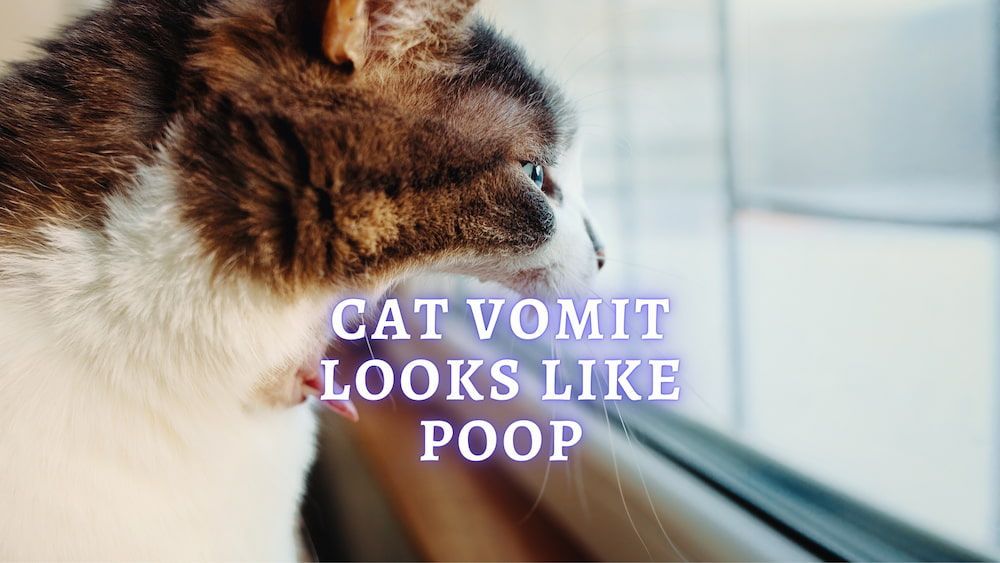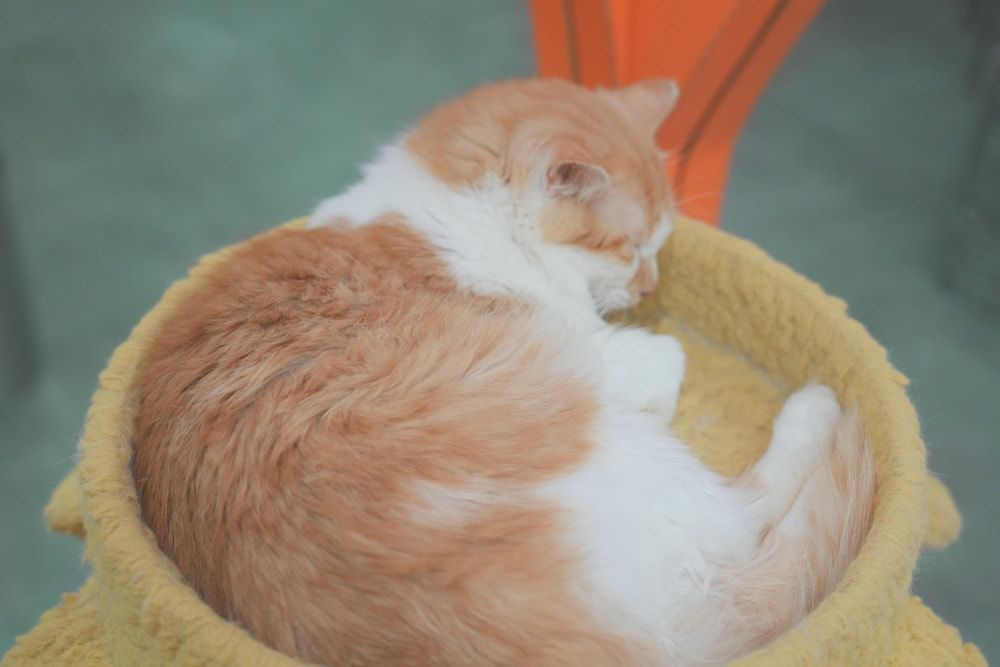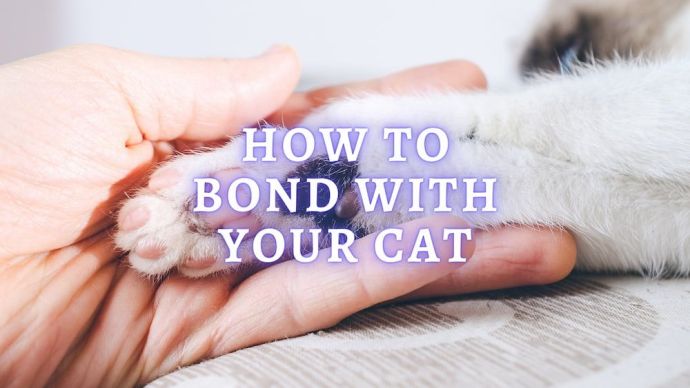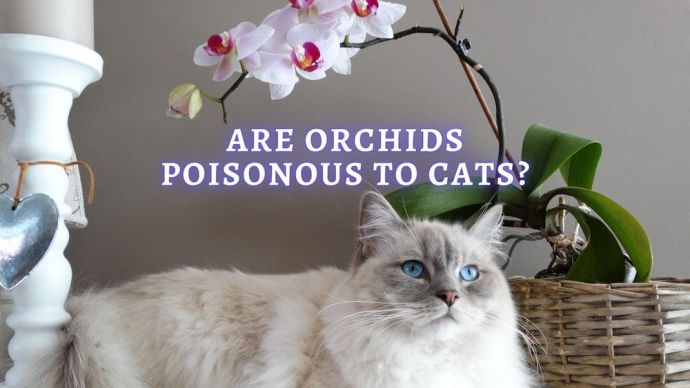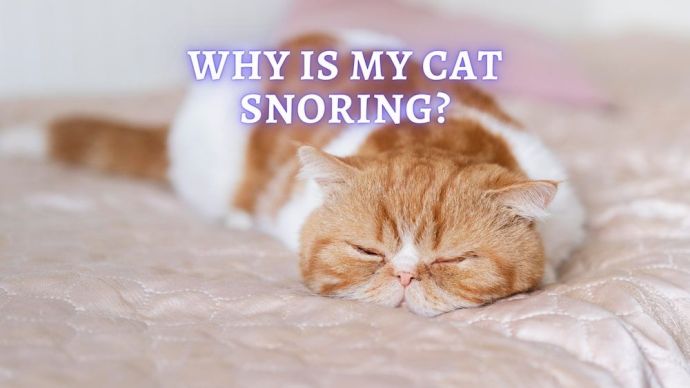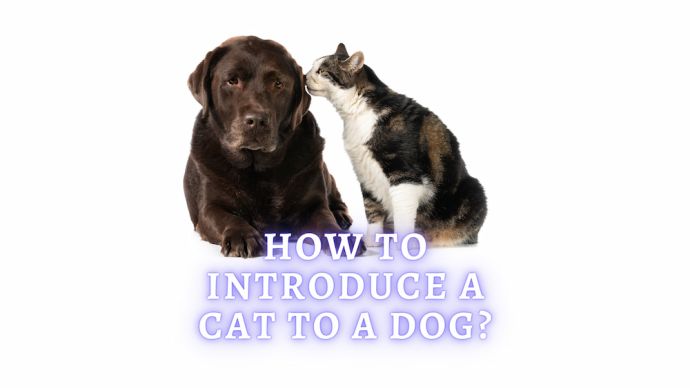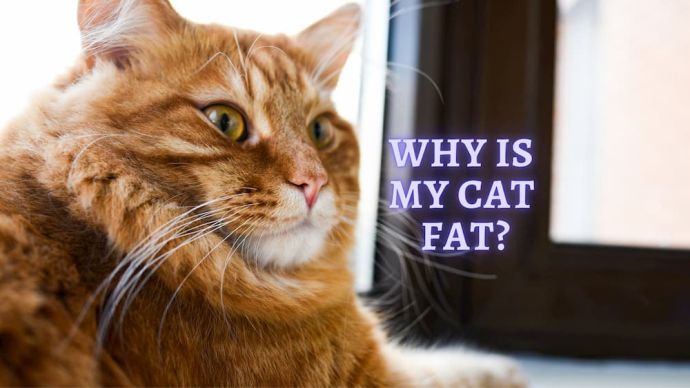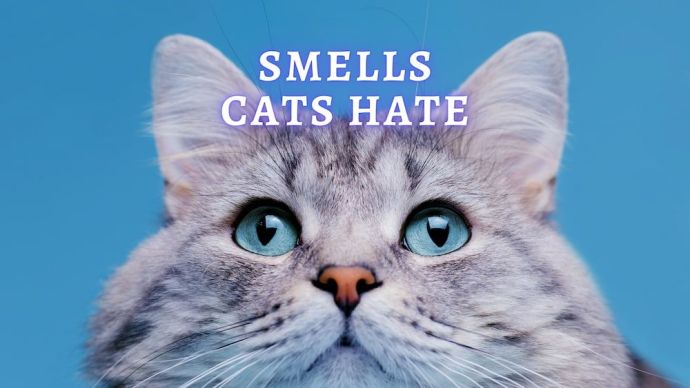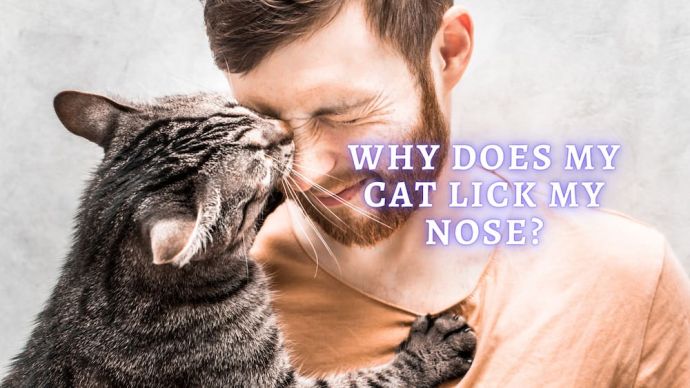Cat Vomit Looks Like Poop: What does your cat’s vomit say about their health?
Written by:
Author: Marissa Prizio
Marissa Prizio attended the University of New Hampshire and earned a bachelor's degree in biomedical Animal Science. Marissa has always enjoyed writing; she was even mixing literature classes into her science major in college. During her writing career, she has edited eBooks, written for a variety of websites, and created audio-visual courses for sustainability.
View all 36 articlesLearn about our editorial process and veterinary review board.
Viewed: 3068
Updated on: 12/24/2022
Pet vomit is a stressful and concerning experience for most pet owners, but cat owners know that vomiting in cats is more complex than in most other animals. While each cat is unique, most pets tend to experience vomiting to some extent.
When a pet puke, it is not always a sign of illness.[1] Sometimes, it is a natural function used to expel excess hair from the digestive tract, and sometimes it actually regurgitates. These factors can make the pet vomit a very confusing health sign to decipher, so let’s break it down into valuable distinctions, so you know how to react next time your cat puke.
Why Is My Cat Vomiting?
When it comes to cats, vomiting can happen for several reasons. Since puke comes from the intestines, it is commonly assumed that puke results from stomach upset. This can be the case, especially if a pet starts vomiting after eating something unhealthy or has a sensitive digestive system. This is generally referred to as gastroenteritis and results from the stomach becoming inflamed; however, there are plenty of other reasons for puke.[2]
Kidney, liver, pancreatic, or nervous system failures can also trigger vomiting. These chronic illnesses come with other symptoms, as do many different triggers for puking in cats. Infections, poison, intestinal parasites, allergies, and even tumors can result in vomiting, depending on the individual.[2] [3] In these cases, puke is a symptom of a condition; vomiting generally isn’t a condition on its own.
One of the less intense and more commonly recognized causes of feline vomiting is hairballs, also called trichobezoars.[4] Cats puke hair when they have overgroomed themselves or consumed too much fur while grooming. An excess of hair in the stomach irritates the stomach and causes a puke, but generally doesn’t cause any lasting damage if it is properly expelled.
READ MORE: Chronic Kidney Disease (CKD) in Cats
Types Of Cat Vomit
Cat owners know that vomit comes in a variety of forms. A pet puke color chart can help determine why your pet may be vomiting. Some cat puking looks like poop due to undigested food; others may be very dark brown from blood.
Color is essential and will be discussed later, but the frequency of a cat’s vomiting is also fundamental and tends to be overlooked when assessing a pet’s health.
Acute
When a cat is occasionally vomiting for less than two days, their condition is referred to as acute vomiting.[4] Acute puke can include hairballs, undigested food, clear puke, and plant matter. As long as the vomiting is not constant and does not consist of blood or foreign bodies, it is generally considered less concern.
Acute puke comes with less concern for dehydration than chronic vomiting. Food may be withheld to help the stomach relax, but water should always be available just in case. Antineasua medications or small portions of a bland diet are possible treatments as long as a pet with acute puke has no other disease symptoms.[4]
A pet throwing up infrequently with no other symptoms is not of great concern but should still be monitored. In many cases, owners never discover what caused their pet’s vomiting.
Chronic
When a pet is vomiting more than once a day for more than a few days their condition can be referred to as chronic puke. Frequent puke is more likely to be a sign of chronic illness like liver disease, kidney failure, or parasitic infections. It also comes with a high risk of dehydration and should be treated as soon as possible.[4]
Chronic vomiting may be supported with fluids, but the best way to treat this symptom is by identifying and treating the underlying condition. The road to recovery for chronic puke tends to involve more testing and treatments than acute cases.[3] [4]
Anti-nausea medications may help, but in many cases, owners need to discover and treat the cause of their pet’s vomiting to stop the puke. A cat throwing up frequently or regularly is reason for concern.
Difference Between Vomiting & Regurgitation
Vomiting is an uncontrollable reaction where the body expels the contents of the cat’s stomach and upper intestines with force. In pets, puke is normally preceded by salivation, discomfort, stress, repeated swallowing, contractions of the abdominal muscles, and retching.[3] [4]
Regurgitation does not require as much force and so it lacks many of the actions that happen prior to vomiting.[4] This passive form of expelling the stomach’s contents often contains more recent items that are less digested and may even appear cylindrical due to the shape of the esophagus. The regurgitation of partly digested items is why pet puke looks like poop sometimes.
Why Does Cat Throw Up Look Like Poop?
Most cat owners are familiar with bile and fecal matter but less familiar with regurgitated pet food. Depending on the food given and the form in which it is regurgitated, cat puke can look like poop.
If your pet’s puke is liquidy and dark brown to black in color, it may look more like diarrhea. This form of poop-like puke is more concerning since the color can result from internal bleeding. If this is the case, your cat should receive immediate medical attention.
READ MORE: How Often Do Cats Poop?
When Is It a Sign of Concern?
If your pet vomits multiple times a day, it is time to see a veterinarian. Frequent and long-term vomiting is concerning, but other symptoms are a reason for concern when coupled with puke.
If you know your pet eats non-food items and they start vomiting frequently, there is a chance that a foreign object may be in their intestine.[1] [3] Foreign bodies can damage the stomach lining, causing internal bleeding which results in brown liquid puke. This would be of great concern and requires a veterinarian immediately for possible emergency surgery.
Green foreign material can also be found in puke if your cat has eaten plants. Some plants are toxic to cats so talking with the vet immediately can help you determine if you need an emergency appointment.
Since puke can also be a symptom of kidney disease and metabolic disorders, keep an eye out for weight loss, changes in older pets, or if your cat suddenly has excessive loose fur.[1] [2] [3] If your pets throw up and you notice symptoms of other diseases, you have reason to be concerned.
RELATED: How to Choose the Right Veterinarian For Your Cat
Treating and Preventing Vomiting
Preventing puke in pets is possible for individuals who vomit for specific manageable reasons. Cats who have a food allergy can be kept on a special diet, like a hydrolyzed protein diet, to ensure they don’t have stomach irritation from their allergen. Cats with inflammatory bowel disease should also be kept on a steady diet and receive supportive care when needed.[3]
A healthy cat can become a vomiting pet on an empty stomach. If your pet skips its meals, their stomach juices collect in the stomach resulting in irritation and puke. Cats can be sensitive creatures who puke with certain foods, even if they pet foods. Never switch to a new dry or wet food too fast to prevent puke and for cats that regurgitate from eating too fast, you can try food puzzles.
Treating a nauseous pet depends on what has caused the puke. In acute cases, oral medications may resolve the issue while vomiting from conditions like kidney disease requires a definitive diagnosis for effective treatment.[1] [2] [3] [4] Seeking professional veterinary care is the best first step in treating a vomiting cat regardless of the cause.
Frequently Asked Questions
Why does my cat’s vomit look like poop?
If your cat’s vomit looks like poop, it could result from your cat’s diet and regurgitation. When dry cat food is expelled as partially digested food it can have a very cylindrical and brown appearance.
If your cat’s vomit looks very dark brown and has abnormal substances in it, it can result from a foreign body. In this case, the color would come from intestinal bleeding, which may look more like runny stool than a normal poop.
What does brown vomit mean in cats?
Dark brown or dark red vomit is a sign of internal bleeding in the intestinal tract. This can be a sign of serious illness or trauma to the intestinal tract. If your cat has brown vomit that clearly isn’t regurgitated cat food then it is time to see a veterinarian.
Do cat hairballs look like poop?
Cat hairballs can look very odd, and when they are regurgitated with partially digested foods, they can look like fecal material. If a cat’s vomiting up hairballs, they tend to also be vomiting clear liquid. Long-haired cats tend to have larger hairballs and, unlike poop, most cats won’t leave hairballs in their litter boxes.
Can a cat vomit stool?
It is very unlikely that a cat will vomit stool. Vomiting stool would require a severe malfunction of the digestive tract. It is far more likely that your cat’s vomit just looks like poop, but it doesn’t hurt to visit a vet regardless.
Article Sources:
- “Vomiting.” Cornell University, vet.cornell.edu/departments-centers-and-institutes/cornell-feline-health-center/health-information/feline-health-topics/vomiting.
- Hunter, Tammy, and Ernest Ward. “Gastroenteritis in Cats.” VCA Animal Hospital, vcahospitals.com/know-your-pet/gastroenteritis-in-cats.
- Williams, Krista, and Ernest Ward. “Vomiting in Cats.” VCA Animal Hospital, vcahospitals.com/know-your-pet/vomiting-in-cats.
- Webb, Craig. “Vomiting in Cats.” Merck Veterinary Manual. merckvetmanual.com/cat-owners/digestive-disorders-of-cats/vomiting-in-cats.
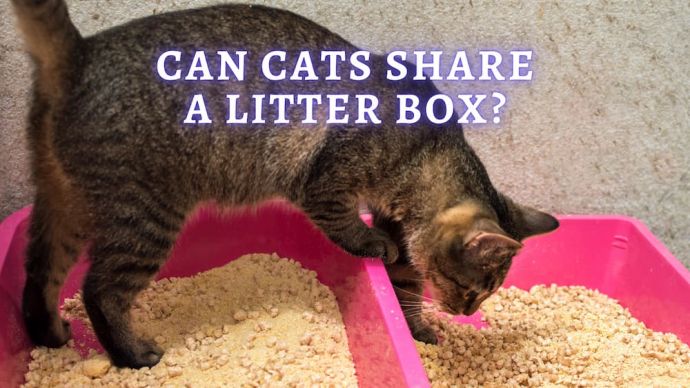 Cat Care Can Cats Share a Litter Box? How Many Boxes Should Be in a Multi-Cat House?
Cat Care Can Cats Share a Litter Box? How Many Boxes Should Be in a Multi-Cat House? - 218
- 1
 Cat Care Why Does My Cat Attack My Legs? 10 Reasons Why and What To Do About It (Vet-Approved Advice)
Cat Care Why Does My Cat Attack My Legs? 10 Reasons Why and What To Do About It (Vet-Approved Advice) - 45566
- 21
 Cat Veterinary Tips Cat Stomach Gurgling: Vet Advice on Why is Your Cat Stomach Gurgling?
Cat Veterinary Tips Cat Stomach Gurgling: Vet Advice on Why is Your Cat Stomach Gurgling? - 35339
- 4
 Cat Veterinary Tips My Cat Lost its Voice: Can Cats get Laryngitis? (Vet Advice)
Cat Veterinary Tips My Cat Lost its Voice: Can Cats get Laryngitis? (Vet Advice) - 23247
- 13









